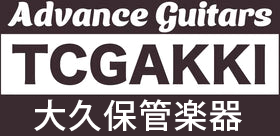'63 Stratocaster with Hakaranda round board! Scratches and peeling paint give this Stratocaster a sense of presence! The fat sound of the Stratocaster has a vintage feel with a thicker grip than the early Stratocaster and a well used vintage sound.
One of the set screws on the pickguard was moved closer to the middle pickup, and the dot markers on the 12th fret became narrower.
FENDER 1963 STRATOCASTER
There is no major change in the cavity processing, and it is the basic shape of the '60s. The handwritten alphabets may be the initials of the person in charge of color designation and processing.
The grooves for the wiring cords are straight and long. Since this is handmade, there are large individual differences.
SwitchCraft" jacks are used. The edges of the jack cavity have not been cut down much and there are no pin holes.
From '63, the neck pocket is painted with a handle attached, so the paint is split in half.
The body contour is shallow and small on both the top and back.
The body date on the boss spring cavity is September '63. This seems to be the last year that the body will be dated.
Original black bobbin pickups with black fiber paper on the top and bottom of the bobbin. From the latter half of '64, the color of the bobbin bottom side is changed to gray fiber paper and the pickup is also dated. The magnet of the pickup is cylindrical Alnico type V and the coil is "AWG (American Wire Gauge) #42". The pole piece is a "staggered" type with different height for each string to balance the volume, which was used until the mid '70s.
Alnico Type V: An alloy of approximately 50% iron with aluminum (Al), nickel (Ni), and cobalt (Co).
◎For your reference
The serial number is one of the most important factors to identify the date of production. However, the serial number may not always match the date of production, since there are some units whose serial number and production date are extremely far apart for some reason, not to mention errors caused by system changes including the production process, etc. The serial number is not always the same. Since some parts can be easily replaced, it is necessary to make a comprehensive judgment including each part in order to determine the actual year.
The rubber tube used for the spacer of the pickup is up to this year. Many of the parts are hardened due to aging, but from '64, the rubber tube is replaced by a spring.
Two "Stackpole" round groove type pots have been used since around 1957. The volume pots (CTS) and switches are replaced with CRL 5-point switches. Orange ceramic capacitors have been used since '61.
The pickguard is commonly called "green guard". It is so called because the celluloid material on the top has turned yellow with age, and the color of the celluloid mixed with the dark blue (looks black but is actually dark blue) in the center of the pickguard looks greenish. The aluminum shield plate on the back side, which used to cover only the control section, has been replaced with a shape that covers the entire back side since mid '59.
The pickguard screws, which were located between the front and middle pickups, were moved closer to the middle pickups in this year. This is one of the points to distinguish it from the appearance.
The round fingerboard with curved surface was adopted from the middle of '62." The "2" is the Stratocaster code number, and the "SEP(SEPTEMBER)" and "63" are the month and year of manufacture, in this case September '63." B" means neck size (thickness).
Oval type neck shape with increased thickness and width. The difference is only about 1mm, but the actual grip is completely different than the flat type of the early 60's. I personally like the thickness of this neck. Personally, I like the thickness, but it would be even better if it were slabbed....
◎For your information
Neck thickness: approx. 22mm (at 1st fret), approx. 26mm (at 12th fret)
Kluson "covered" type pegs. Single-row Kluson (single line)" with "KLUSON DELUXE" engraved on the top, and "Double-row Kluson (double line)" with two rows of engraving from the middle of this year.
Gold with black border, commonly known as the "spaghetti logo. From 1961, the patent number is added to the bottom of the logo. From '62, "2,960,900" was added for body contouring. The string guide was tapered from '63, and the spacer was changed from metal to nylon the following year.
The shape from the fingerboard to the headstock is a large gentle curve. The thickness of the head is especially thicker than the other model of the same year (13mm-13.5mm), and there is a considerable difference.
For your reference
1st string side: approx. 15mm, 6th string side: approx. 15-15,5mm
Clay dots from '59 to '64: The dot marker on the 12th fret was located in the middle of the 5th and 2nd strings, but from '63, this space is narrower inward.
The difference is clear when compared to the '59 model. This is another point to distinguish it as well as the pickguard.
Separate type tremolo block, which integrates the "bridge" and the "inertia block" that functions as a tailpiece. The name "synchronized tremolo" is derived from the fact that the integrated bridge plate and inertia block move synchronously when arming. From around 1957, a type with a deep groove for "FENDER PAT. PEND." engraved on the saddle was also adopted, but it seems that not a few of them are confused between the two.
The pickguard and jack plate screws were changed in '58, and the neck joint and spring hanger screws were also changed from wood screws to tapping screws around '62. The serial number is "L series" with "L" at the beginning of the number, and this is the specification from '63 to '65.
